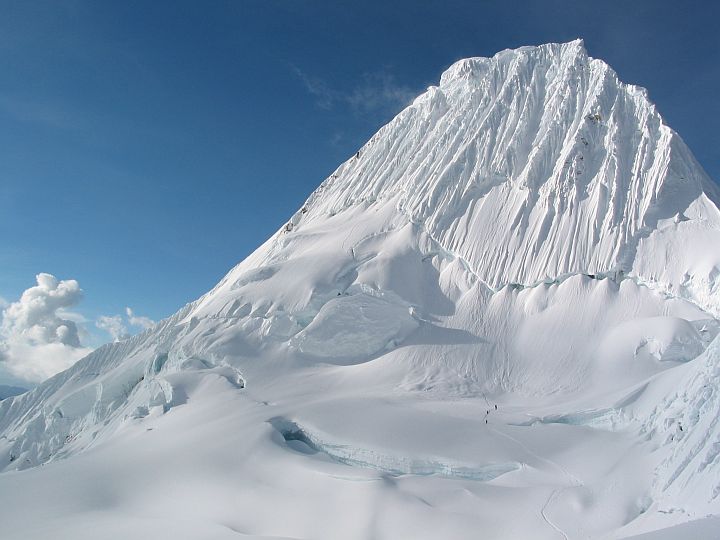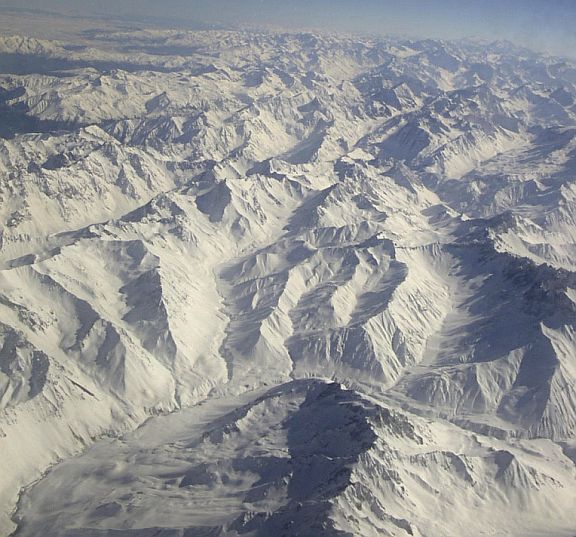The Andes

The Andes Mountains are the longest mountain chain in the world. They stretch along the entire west coast of South America from Cape Horn to Panama, a distance of 4,500 miles. Only the Himalaya Mountains and their adjacent ranges such as the Hindu Kush are higher than the Andes range. Many Andean peaks rise over 20,000 feet (6,096 m.). It is about 500 miles across the widest part of the range. In Spanish, they are called Cordillera de los Andes, which means Andes Mountain Range.
The southern Andes are less than 10,000 feet (3.048 m.) in elevation near the southern tip of the continent. Farther north, the peaks are higher. Aconcagua (22,841 feet; 6,962 m.), the highest peak in the Americas, and one of the Seven Summits stands in Argentina, but is only about 65 miles from Santiago, Chile.
The Central Andes form the broadest part of the mountain system. Two ranges running northwest and southeast make up this section. Between these ranges lie the high plateaus of Peru and western Bolivia, such as the Altiplano Plateau. The plateaus themselves average about 12,000 feet above sea level (3,657 m.). Farther north, the two ranges come closer together. They finally join into one huge range in Ecuador. The highest peaks of the central Andes are Pissis (22,546 feet; 6,872 m.), Huascaran (22,205 feet; 6,768 m.), Illampu (20,892 feet; 6,368 m.), Sajama (21,463 feet; 6,542 m.), Illimani (21,122 feet; 6,438 m.), Chimborazo (20,565 feet; 6,268 m.) and Cotopaxi (19,347 feet; 5,897 m.).
The Northern Andes have three ranges of mountains, and most are lower than the mountains to the south. One range runs along the coast through Colombia into Panama. The central range lies between the two narrow valleys of the Cauca River and the Magdalena River. This part of the Andes includes the famous volcano of Tolima (17,060 feet; 5,200 m.). The third branch of the northern range runs northeast into Venezuela. Many peaks in the northern Andes reach 15,000 feet (4,572 m.) or more. The highest is Cristobal Colon (18,701 feet; 5,700 m.) in Colombia.
Many of these high mountains are volcanoes. Some of them are active. Glaciers cover the high peaks, even those close to the equator. The largest glaciers, however, are in southern Chile. Many of the glaciers have cut deep valleys into the rocky coastline.
The main tributaries of the mighty Amazon River begin on the eastern slopes. Two other great rivers, the Parana and the Orinoco, also have tributaries from the Andes.
The name ANDES is believed to have come from ANTI, the Quechuan word for copper. Much of this metal is found in the mountains. The Andes also contain gold, silver, tin, lead, iron, platinum, and quicksilver. Many kinds of animals live in this mountain range, including the alpaca, chinchilla, condor, huemul and llama.
Return to Mountain Ranges from The Andes




